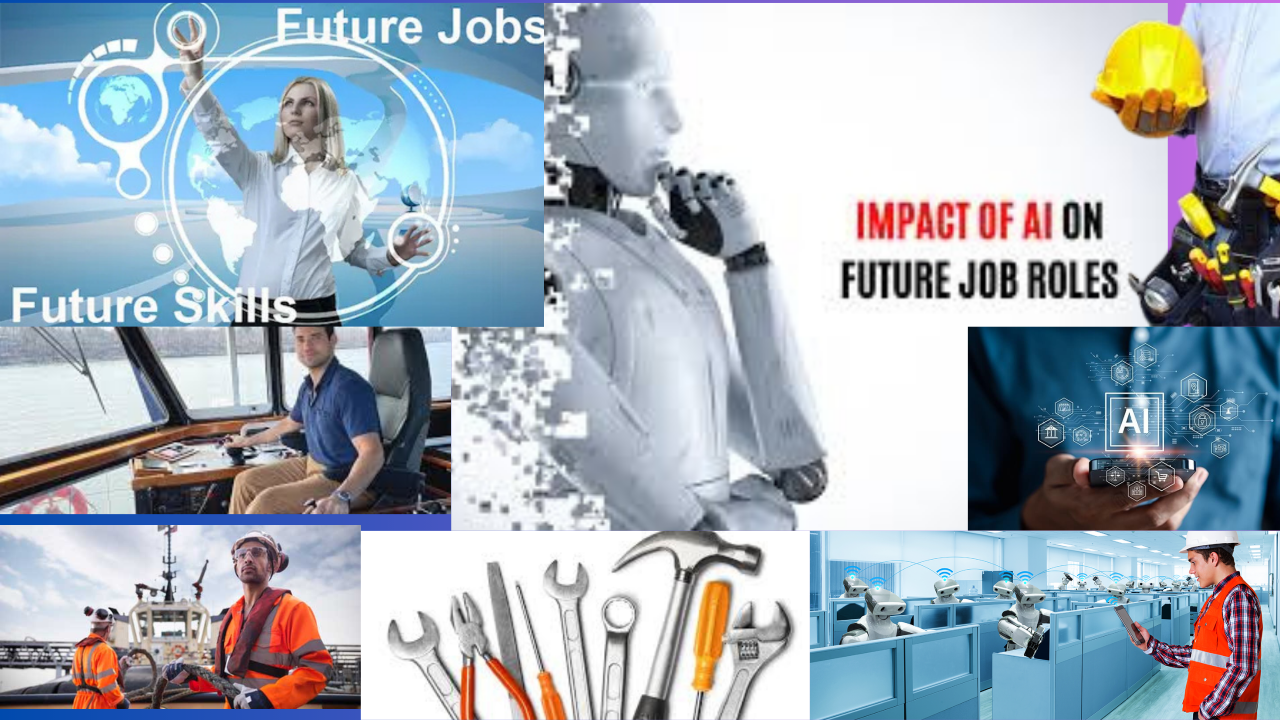The AI Boom: How It's Moving Faster Than You Think—and Why Trade Skills Are Still Thriving

Artificial Intelligence (AI) is advancing at a breathtaking pace—far quicker than most people realize. From automating content creation and transforming customer service to driving cars and managing massive data operations, AI is reshaping industries in real time.
But while headlines scream about automation and the future of work, a quieter truth exists: not all jobs are at risk. In fact, many trade skills remain not only unaffected but are now more in demand than ever.
This newsletter dives into the surprising duality of our modern workforce—where AI is eliminating some tasks while reinforcing the value of others. If you’re someone seeking stability, high demand, and future-proof opportunities, this may be the most eye-opening 10-minute read of your week.
Part 1: The Rapid Acceleration of AI
Over the past two years, we've seen an explosion of AI capabilities:
- ChatGPT and LLMs can now write emails, proposals, lesson plans, marketing campaigns, and code in seconds.
- AI design tools are generating logos, websites, and even fully functional apps without a human designer.
- AI voice assistants are answering phones, booking appointments, and performing data entry.
AI video tools can now create digital twins, lip-syncs, and promotional reels in multiple languages with almost no human input.
With companies investing billions into AI integration, the pace of adoption is accelerating faster than regulations, policies, or even education systems can keep up.
So what does this mean for the average worker?
Reality check: If your job revolves around predictable tasks that can be turned into data-driven processes, there's a high chance it will be reshaped, automated, or replaced in the next 3–5 years.
Part 2: The Illusion of Total Disruption
With all this change, it's easy to believe that every job is at risk. But that’s not the full picture.
AI still struggles with:
- Physical dexterity in uncontrolled environments
- Contextual understanding and physical troubleshooting
- Empathy and nuanced human interaction in real-time
- On-site problem-solving in variable environments
This is why trade skills—jobs that require hands-on labor, real-world problem solving, and site-specific expertise—are thriving. In fact, many of these roles are seeing a resurgence in value.
Part 3: The Rise (and Stability) of Trade Skills
Here are several industries where AI is making minimal impact—and where humans are irreplaceable:
1. Offshore and Tug Boat Industry
Operating offshore vessels, tugboats, and barges requires physical presence, split-second decision-making, mechanical know-how, and maritime certifications. AI may assist in navigation or predictive maintenance, but the job demands a trained human crew.
2. Carpenters & Contractors
You can’t build a house through a screen. Whether it’s framing a structure, installing beams, or handling renovations, carpenters rely on hands-on work and skilled craftsmanship that machines can’t replicate on-site.
3. Electrical Technicians
Electrical systems are complex, and installation or repair work requires diagnostics, understanding code requirements, and field adaptation. An AI can generate a wiring diagram, but only a certified electrician can safely execute it.
4. Plumbers
Leaks, clogs, installations, water damage repair—none of this is happening without someone crawling under sinks, navigating outdated systems, and dealing with unexpected issues in real-time. AI won't be replacing your local plumber anytime soon.
5. Lawn Care Services
From mowing and edging to landscape design and irrigation repair, lawn care needs boots on the ground. Drones and AI can help map a yard or schedule a job, but the actual work? Still very much human.
6. Exterior Services (Pressure Washing, Painting, Roofing)
These jobs require safety measures, manual labor, environmental adaptation, and customer-specific customization. There's no AI app that can clean mold off siding or install a new roof.
7. Mechanics
Diagnosing and fixing physical issues in vehicles, boats, and machinery demands tactile feedback, precision tools, and hands-on skill. AI can support diagnostics, but a skilled mechanic is essential.
8. HVAC Technicians
Heating, ventilation, and air conditioning systems vary widely by make, model, and location. Repairs and installations often involve cramped spaces, wiring, and heavy lifting—tasks AI simply cannot perform.
9. Welders
Welding involves precision, safety, manual dexterity, and real-time visual cues. While robotics may assist in factory settings, field welders are still in extremely high demand.
10. Pest Control
Identifying and treating pest infestations in homes and businesses requires environmental awareness, customized planning, and physical application of treatment—all tasks that still depend on trained professionals.
Part 4: Why These Jobs Are Safer (and In High Demand)
- Human Touch: Many trade jobs involve customer interaction, real-world troubleshooting, and empathy—none of which AI can fake effectively.
- Licensing & Regulation: Many of these jobs require certifications, continuing education, and hands-on apprenticeships, which create a protective barrier against rapid automation.
- On-Site Specificity: Jobs that involve unpredictable environments (weather, terrain, building conditions) are harder to automate.
- Aging Workforce: Many skilled trade professionals are aging out of the workforce, creating a gap in the labor market that younger generations can fill.
- Physicality: Robots aren’t crawling through attics, climbing ladders, or hauling lumber any time soon.
Part 5: The Real Opportunity—Hybrid Thinking
The most powerful workers of the next decade? Those who understand both the value of trade skills and the basic applications of AI.
Imagine a contractor who uses AI to:
- Create quotes faster
- Design layouts with 3D tools
- Communicate better with clients
- Schedule jobs more efficiently
Or a lawn care business that uses AI to:
- Automate lead generation
- Analyze property data for better pricing
- Train new hires with AI tutorials
The future isn’t AI versus trades—it’s AI plus trades. The blend of timeless skill and modern tech is where real success lives.
Final Thoughts: AI Is Fast, But Trade Skills Are Fierce
If you’ve been feeling overwhelmed by AI and automation talk, don’t panic—get perspective.
The world is changing, yes. But some of the most stable, lucrative, and purpose-driven work remains in places machines simply can’t reach.
Skilled trades are not only resilient—they’re thriving. And with just a bit of AI know-how, trade professionals can actually increase their productivity, value, and earning potential.
So whether you're guiding a young person, considering a career pivot, or running a business—don’t overlook the incredible opportunity sitting in plain sight.
The future belongs to those who build it. Literally.
Need Help Applying AI to Your Trade or Service Business? I’d love to help. Whether you’re a solo contractor, growing a lawn care company, or managing a skilled trade workforce, I can show you how to integrate simple AI tools into your business strategy.
Let’s talk possibilities.
Until next time,
Rene' Mnafre - Helping You Merge Real-World Skill with Digital Power


Give us a call today
Phone Number: (504) 344-3317
Send us an Email today
Email: manfreconsulting@gmail.com
All Rights Reserved | Manfre And Associates Consulting Services




